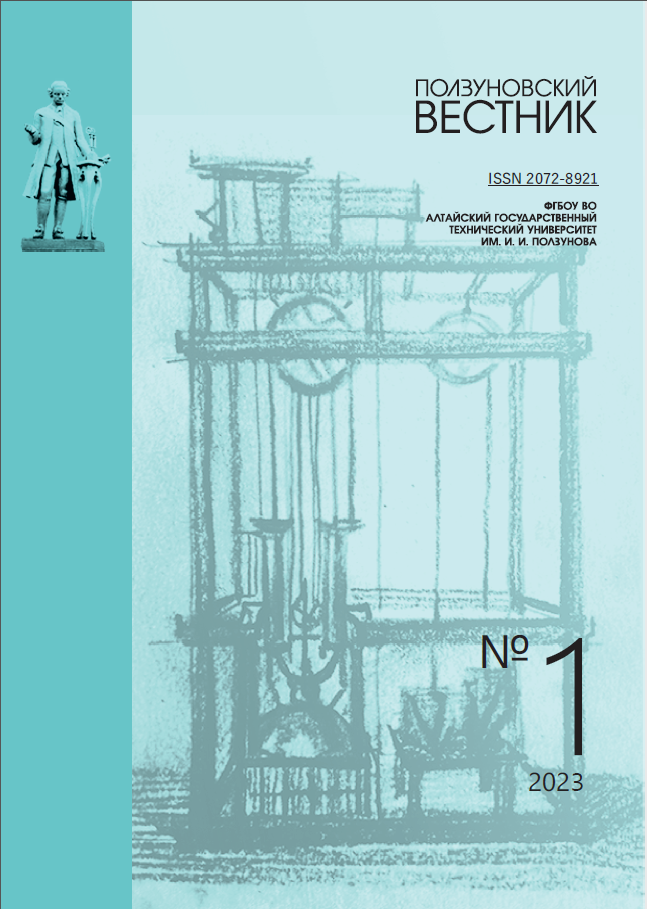COMPARATIVE CHARACTERISTICS OF THE INFLAMMATORY REACTION DURING IMPLANTATION OF SYNTHETIC POLYMERIC MATERIALS IN EXPERIMENTAL ANIMALS
HZBNHY
DOI:
https://doi.org/10.25712/ASTU.2072-8921.2023.01.022Keywords:
ultra-high molecular weight polyethylene, polyvinylidene fluoride, inflammation, implant, biocompatibilityAbstract
The paper presents the results of a study of the physico-mechanical, structural characteristics and biocompatibility of polymeric materials for medical purposes - ultra-high molecular weight polyethylene and polyvinylidene fluoride. The polymer samples under study were produced by hot pressing followed by cooling under pressure in a press. Determination of tensile strength, relative elongation, yield strength and tensile modulus was carried out on a universal testing machine. The surface morphology of polymer samples before and after implantation into laboratory rats was studied by scanning electron microscopy. Structural changes in polymers after implantation into the body are noted, expressed in smoothing the surface of polyvinylidene fluoride and an increase in grooves on the surface of a sample of ultrahigh molecular weight polyethylene. The effect of implantation of materials on changes in the functional group composition was studied by infrared (IR) spectroscopy. It is shown that a sample of ultra-high molecular weight polyethylene has new absorption bands related to vibrations of the C-O bond of the carbonyl and epoxy groups. The introduction of a polyvinylidene fluoride implant into the subcutaneous tissue of an animal does not lead to a change in the chemical composition and the formation of new absorption bands, which indicates the bioinertness of the material. The degree of immunogenicity and the nature of inflammatory processes in the tissues of the body around the test material is assessed by surgical implantation into the physiological spaces of laboratory animals. A comparative evaluation of the inflammatory reaction at the site of implantation of polymer implants made of ultra-high molecular weight polyethylene and polyvinylidene fluoride into laboratory rats was carried out. The inflammatory response was assessed by histological samples of the skin around the implants.
References
Parida P., Behera A., Mishra S.C. Classification of Biomaterials used in Medicine // International Journal of Advances in Applied Sciences (IJAAS). 2012. Vol. 1. № 3. P. 31–35.
Ассортимент, свойства и применение фтор-полимеров Кирово-Чепецкого химического комбината / З.Л. Баскин [и др.] // Российский химический журнал. 2008. Т. 52. № 3. С. 13–22. doi:10.1134/ S1070363209030347.
UHMWPE for arthroplasty: past or future? / E.M. Brach delPrever [et al.] // Journal of Orthopaedics and Traumatology. 2009. Т. 10. № 1. С. 1–8. doi:10.1007/s10195-008-0038-y.
Ultra-high molecular weight polyethylene: influ-ence of the chemical, physical and mechanical proper-ties on the wear behavior. A review / P. Bracco [et al.] // Materials. 2017. Т. 10. № 7. С. 791. doi:10.3390/ ma10070791.
ГОСТ ISO 10993-6-2011. Библиографическая ссылка. Изделия медицинские. Оценка биологического действия медицинских изделий. Часть 6: Исследования местного действия после имплантации: введ. 2023–01–01. Москва, 2013 : Изд-во стандартов, 2013, 24 с.
Живулин В.Е., Жеребцов Д.А., Песин Л.А. Молекулярное строение химически карбонизированных пленок поливинилиденфторида (по данным ИК-спектроскопии) // Известия Томского политехнического университета. Инжиниринг георесурсов. 2018. Т. 329. № 8. С. 80–87.
Preparation and characterization of polyure-thane (PU)/polyvinylidene fluoride (PVDF) blending membrane / Н. Dong [et al.] // Desalination and Water Treatment. 2016. Т. 57. № 8. С. 3405–3413.
Тарасевич Б.Н. ИК спектры основных клас-сов органических соединений: Справочник. Москва : МГУ, 2012. 55 с.
Downloads
Published
How to Cite
Issue
Section
License
Copyright (c) 2023 Ivan P. Troev, Alexander M. Spiridonov, Lyudmila G. Marinova, Andrey P. Vasiliev, Sakhayana N. Danilova, Maria P. Kirillina, Dolguyaana N. Sidorova, Aleksei G. Tuisov, Praskovia N. Tarasova, Alexander A. Ushkanov, Natalya P. Gladkina, Denis V. Sivtsev

This work is licensed under a Creative Commons Attribution 4.0 International License.















 .
. This work is licensed under a
This work is licensed under a 
